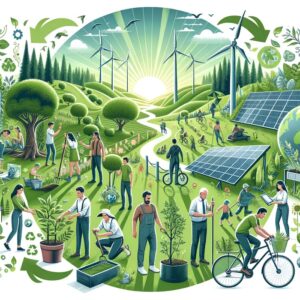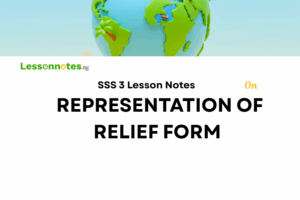Environmental Conservation SS2 Geography Lesson Note
Download Lesson NoteTopic: Environmental Conservation

Environmental conservation is the process of preserving natural resources from loss, waste or exploitation to ensure continuous availability.
Environmental conservation methods include the following:
i. Afforestation
ii. Re-afforestation
iii. Cover-cropping
iv. Improved farming techniques
v. Environmental Education
vi. Recycling
vii. Legislation against environmental degradation.
IMPORTANCE OF ENVIRONMENTAL CONSERVATION TO MAN
Environmental conservation is crucial for several reasons, directly impacting the well-being and survival of humanity. The following are the major aspects of the need and importance of environmental conservation:
- Ecosystem Services: Healthy ecosystems provide essential services such as clean air and water, pollination of crops, climate regulation, and disease control.
Biodiversity and Food Security: Conservation of diverse plant and animal species is vital for maintaining genetic diversity. This diversity is crucial for agriculture, ensuring resilience against pests, diseases, and environmental changes, ultimately contributing to global food security.
- Climate Change Mitigation: Preserving forests and other ecosystems helps sequester carbon dioxide, mitigating the impacts of climate change.
- Natural Resources for Livelihoods: Many communities depend on natural resources for their livelihoods, including fishing, agriculture, and forestry.
- Human Health: Clean air, water, and soil are essential for human health. Environmental conservation safeguards these elements, preventing pollution and the spread of diseases, leading to a healthier population.
- Recreation and Aesthetic Value: Natural environments offer recreational opportunities and contribute to the overall well-being of individuals.
- Economic Benefits: Conserving natural resources and ecosystems contributes to sustainable economic development.






















